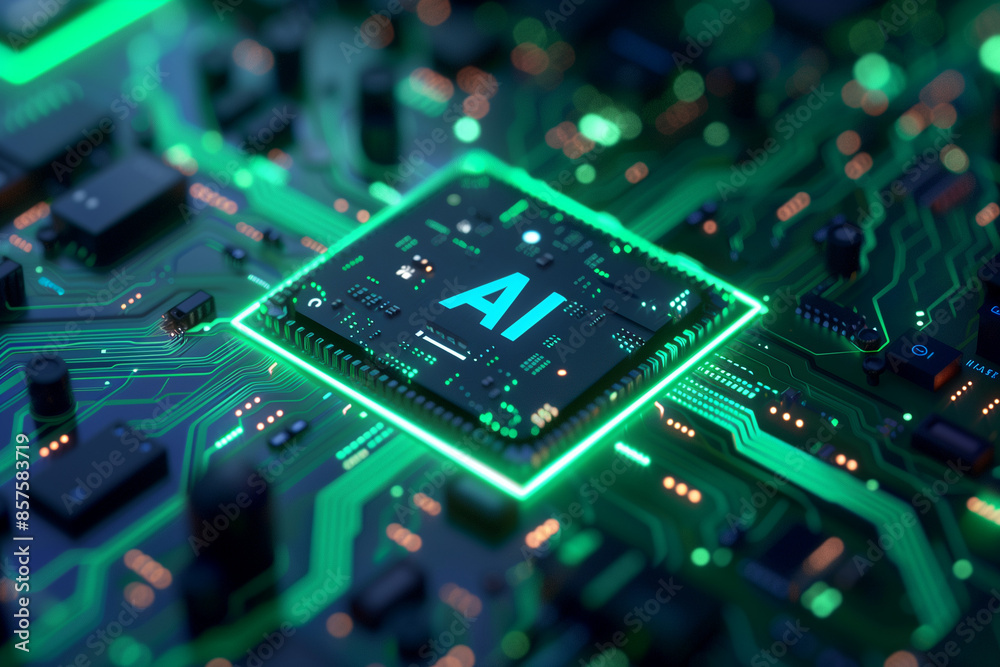From your smartphone’s virtual assistant to the recommendations you see on Netflix, artificial intelligence (AI) has woven itself into the fabric of our daily lives. Yet, for many, it remains a complex and often misunderstood concept, frequently sensationalized in science fiction. But what is it, really? And how does it actually work?
In this guide, we will demystify the world of AI. We’ll break down its core concepts, explore the different types, and look at the real-world applications that are shaping our present and future. Whether you’re a curious beginner or looking to refresh your knowledge, this post will provide a clear and comprehensive overview.
Demystifying Artificial Intelligence (AI) at its Core
At its simplest, artificial intelligence (AI) is a broad field of computer science dedicated to building smart machines capable of performing tasks that typically require human intelligence. This includes abilities like learning, reasoning, problem-solving, perception, and language understanding.
Think of it not as a single technology, but as an umbrella term that encompasses a wide range of methods and tools. The ultimate goal of AI is to create systems that can operate autonomously, perceive their environment, and make decisions to achieve specific goals, mimicking human cognitive functions in a computational model.
How Does AI Actually Work? The Core Components
AI systems work by ingesting large amounts of labeled training data, analyzing it for correlations and patterns, and then using these patterns to make predictions about future states. This learning process is what makes AI “intelligent.” Three key subfields drive most of the AI advancements we see today.
Machine Learning (ML): The Engine of Modern AI
Machine Learning is a subset of AI that provides systems with the ability to automatically learn and improve from experience without being explicitly programmed. Instead of writing code for every possible scenario, developers create algorithms that allow the computer to learn from data.
- Example: A spam filter in your email inbox is a classic example of machine learning. It learns from emails you mark as spam to get better at identifying and filtering out new spam messages in the future.
Deep Learning: A Deeper Dive
Deep Learning is a more specialized subset of Machine Learning. It utilizes multi-layered neural networks, which are inspired by the structure of the human brain. These “deep” networks allow the system to learn from vast amounts of data, identifying incredibly complex patterns.
- Example: Facial recognition on your phone or self-driving car technology relies heavily on deep learning to recognize objects, people, and environmental cues with high accuracy. The development of artificial intelligence (AI) in this area has been monumental.
Natural Language Processing (NLP): Bridging the Human-Machine Gap
Natural Language Processing is the branch of AI that focuses on enabling computers to understand, interpret, and generate human language. NLP is the magic behind how you can talk to your devices and get coherent, useful responses.
- Example: Virtual assistants like Apple’s Siri, Amazon’s Alexa, and Google Assistant all use NLP to process your voice commands and fetch the information you need.
The Different Types of Artificial Intelligence
AI is often categorized based on its capabilities, ranging from the systems we use today to the theoretical concepts that drive research and science fiction. Understanding these types helps clarify where the technology currently stands and where it might be headed.
Artificial Narrow Intelligence (ANI)
Also known as “Weak AI,” this is the only type of artificial intelligence (AI) that humanity has successfully achieved so far. ANI is goal-oriented and designed to perform a single, specific task—like facial recognition, internet searches, or driving a car. While it can be incredibly powerful at its specific job, it operates within a limited, pre-defined range and cannot perform tasks outside its scope.
Artificial General Intelligence (AGI)
Also known as “Strong AI,” AGI is the type of AI you often see in movies. It refers to a machine with the ability to understand, learn, and apply its intelligence to solve any problem, much like a human being. AGI would possess consciousness and the cognitive abilities to perform a wide range of tasks with the same adaptability as a person. Currently, AGI remains purely theoretical.
Artificial Superintelligence (ASI)
This is a hypothetical form of AI that would surpass human intelligence and ability across virtually every field, from scientific creativity and problem-solving to social skills. The development of ASI is a subject of intense debate among experts, raising profound questions about the future of humanity and the ethical considerations of creating something far more intelligent than ourselves.
Real-World Applications of AI Today
While AGI and ASI are still the stuff of speculation, Narrow AI is already transforming industries around the globe. Here are just a few examples of how artificial intelligence (AI) is being used today:
- Healthcare: AI algorithms help doctors detect diseases like cancer earlier and more accurately from medical images. They also power predictive models that identify patients at high risk for certain conditions.
- Finance: AI is used for fraud detection, flagging unusual transaction patterns in real-time. Algorithmic trading uses AI to make high-speed, data-driven decisions in the stock market.
- Entertainment: Recommendation engines on platforms like Spotify and YouTube use AI to learn your preferences and suggest content you’re likely to enjoy, creating a personalized experience.
- Transportation: From GPS navigation that predicts the fastest route based on real-time traffic to the advanced driver-assistance systems (ADAS) in modern cars, AI is making travel safer and more efficient.
- Customer Service: AI-powered chatbots handle customer inquiries 24/7, answering common questions and freeing up human agents to deal with more complex issues.
- E-commerce: Online retailers use AI for personalized product recommendations, dynamic pricing, and inventory management to ensure popular items are always in stock.
The Future of Artificial Intelligence: Opportunities and Challenges
The field of artificial intelligence (AI) is evolving at an incredible pace, and its potential is vast. In the coming years, we can expect AI to drive breakthroughs in science, personalize education, and create new forms of art and entertainment. It holds the promise of solving some of the world’s most pressing problems, from climate change to disease.
However, this rapid advancement also brings significant challenges. Ethical considerations around data privacy, algorithmic bias, and job displacement are critical issues that society must address. Ensuring that AI is developed and deployed responsibly is paramount to harnessing its benefits while mitigating its risks.
Embracing the AI-Powered Future
From a simple definition to its complex applications, artificial intelligence (AI) is no longer a futuristic fantasy but a present-day reality. It is a powerful tool that is augmenting human capabilities and reshaping our world. By understanding its fundamental principles, different forms, and real-world impact, we can better navigate the changes it brings and participate in the conversation about its responsible development.


